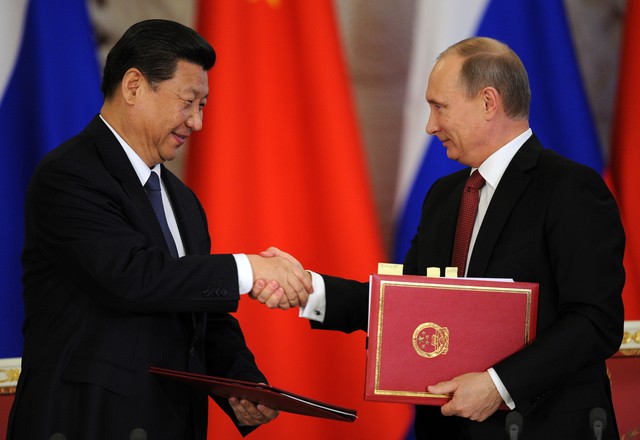Air Force admits latest hypersonic missile test failed, as Russian, Chinese missiles continue to threaten U.S. homeland
03/31/2023 / By JD Heyes

Russia and China spent years working on and developing missiles that could travel at hypersonic speeds, making them all but impossible to shoot down using existing missile defense systems, all while the U.S. spent decades focused on low-intensity guerilla warfare in Iraq and Afghanistan.
That inattentiveness to the growing threat of hypersonic missiles in the hands of our adversaries has cost us big time.
In testimony given to a House Armed Services subcommittee on Wednesday, Air Force Assistant Secretary for Acquisition Andrew Hunter confirmed that the US Air Force intends to terminate the hypersonic weapons program by Lockheed Martin. He stated that the Air Force presently has no plans to pursue future procurement of the weapon, which is referred to as the AGM-183A Air-launched Rapid Response Weapon (ARRW), Zero Hedge reported this week.
An earlier report from Breaking Defense indicated that the ARRW produced by Lockheed Martin could be in peril after Air Force Secretary Frank Kendall, during testimony before the House Appropriations defense subcommittee on the service’s fiscal 2024 budget request this week, acknowledged that the March 13 test was “not a success,” leading to concerns about the future of the program.
“The one we just had was not a success. We did not get the data that we needed from that test … currently examining that, trying to understand what happened,” Kendall told lawmakers.
Kendall was referring to the recent ARRW test conducted by the Air Force, which was announced last Friday and reportedly accomplished “several” objectives but did not include any statements of success, reports said.
According to sources familiar with the matter cited by Bloomberg, the missile was released from a B-52H bomber off the southern coast of California, but encountered issues with data link transmission during its flight.
While Assistant Secretary Hunter’s testimony did not make clear whether the Air Force had decided to terminate the Lockheed program due to the test’s failure or if the decision had been made previously, it is evident that the program has experienced difficulties.
Kendall had indicated that the outcome of future tests could determine the fate of the ARRW program. He also mentioned that the Air Force’s other hypersonic program, the Hypersonic Attack Cruise Missile (HACM), had exhibited more promising results.
“We see a definite role for the HACM concept. It’s compatible with more of our aircraft. And it’ll give us more combat capability overall. So, we’re more committed to HACM at this point in time than we are to ARRW,” he said.
It is a matter of concern that despite being the world’s largest military spender, the US has not yet deployed any hypersonic missiles, while Russia has used its Kinzhal hypersonic missiles multiple times in the conflict in Ukraine.
To counter the advances of Russia and China in this field, the Department of Defense has invested billions of dollars since 2019 in programs aimed at developing hypersonic missiles. However, the recent failed hypersonic missile test by the Air Force has raised doubts about whether the US is falling behind in the hypersonic arms race, Zero Hedge noted further.
The U.S. military has been actively developing hypersonic missile technology in recent years, as these high-speed weapons have the potential to revolutionize modern warfare. Hypersonic missiles can travel at speeds greater than Mach 5 (approximately 3,800 miles per hour), allowing them to cover vast distances in a short amount of time. Their speed, combined with a low radar signature and the ability to maneuver during flight, makes them difficult to intercept, giving the U.S. military a significant strategic advantage.
Despite the progress made in hypersonic missile development, there are still significant challenges to overcome. These include developing materials that can withstand the extreme temperatures experienced during hypersonic flight, the need for more advanced guidance systems, and the overall cost of producing and deploying these weapons.
It’s not clear how Russia — whose defense budget is a fraction of what the U.S. spends annually — can develop and field such a weapon while American engineers cannot.
Sources include:
Submit a correction >>
Tagged Under:
air force, big government, China, dangerous, future tech, hypersonic missile, hypersonic test, Kinzhal, military tech, missile defense, national security, Russia, test failure, United States, USAF, weapons tech, weapons technology, WWIII
This article may contain statements that reflect the opinion of the author
RECENT NEWS & ARTICLES
COPYRIGHT © 2017 WEAPONSTECHNOLOGY.NEWS



















